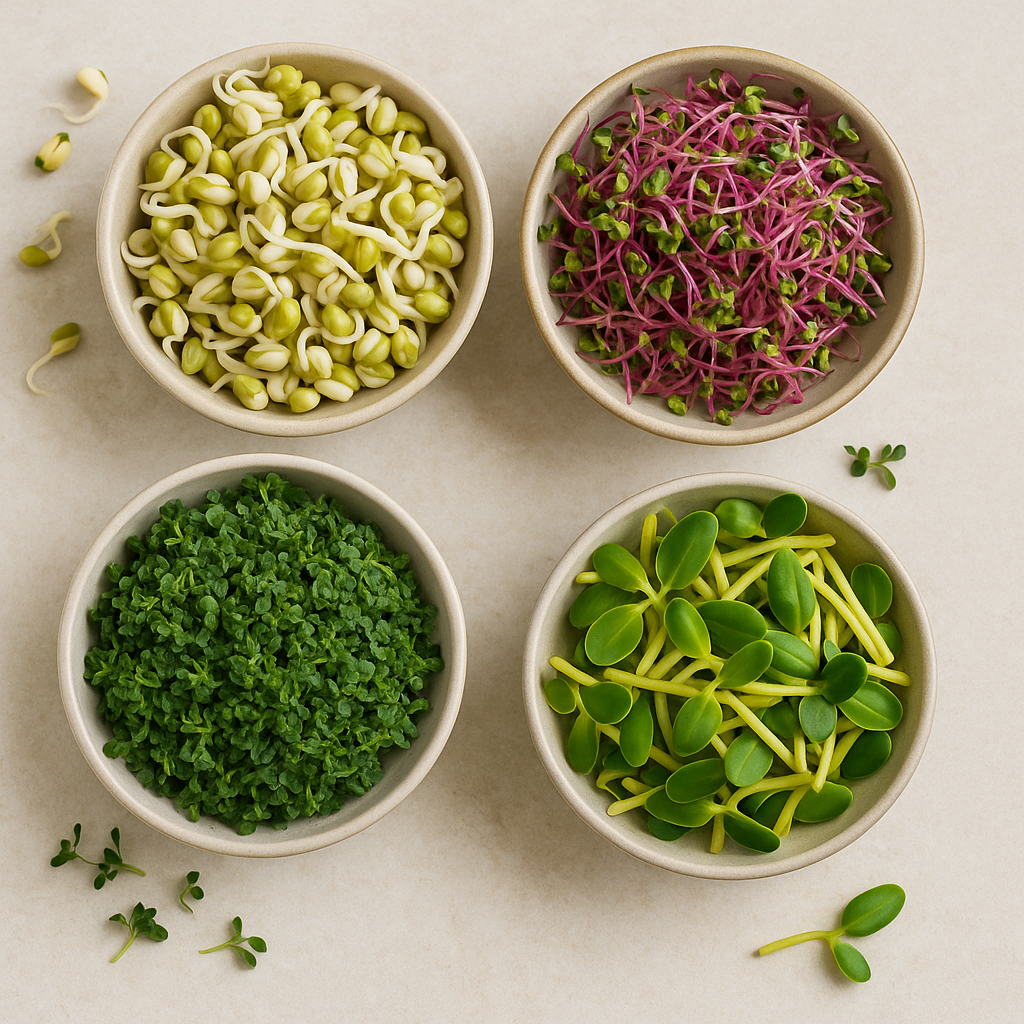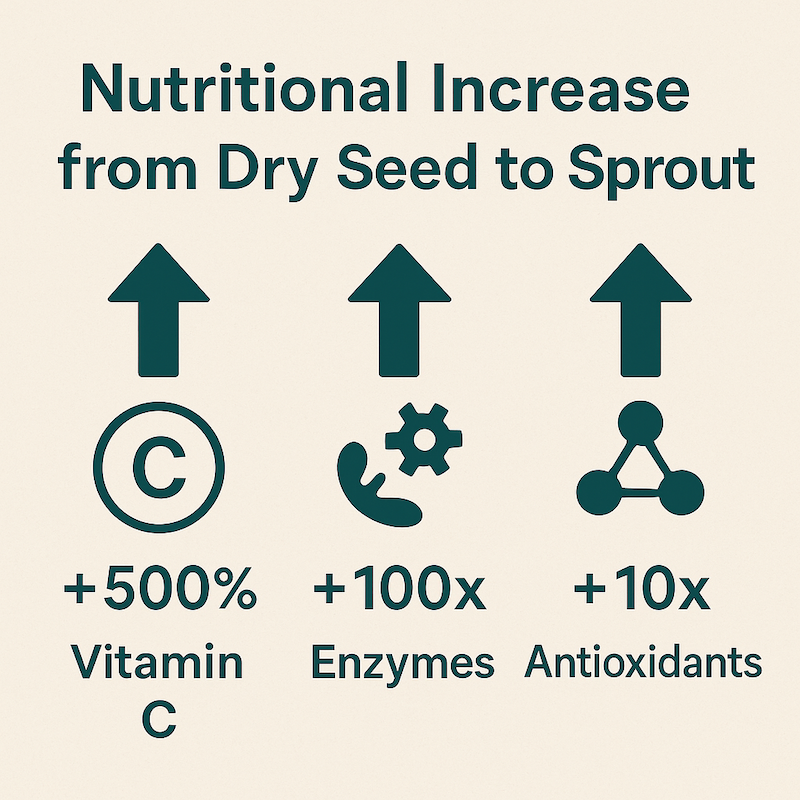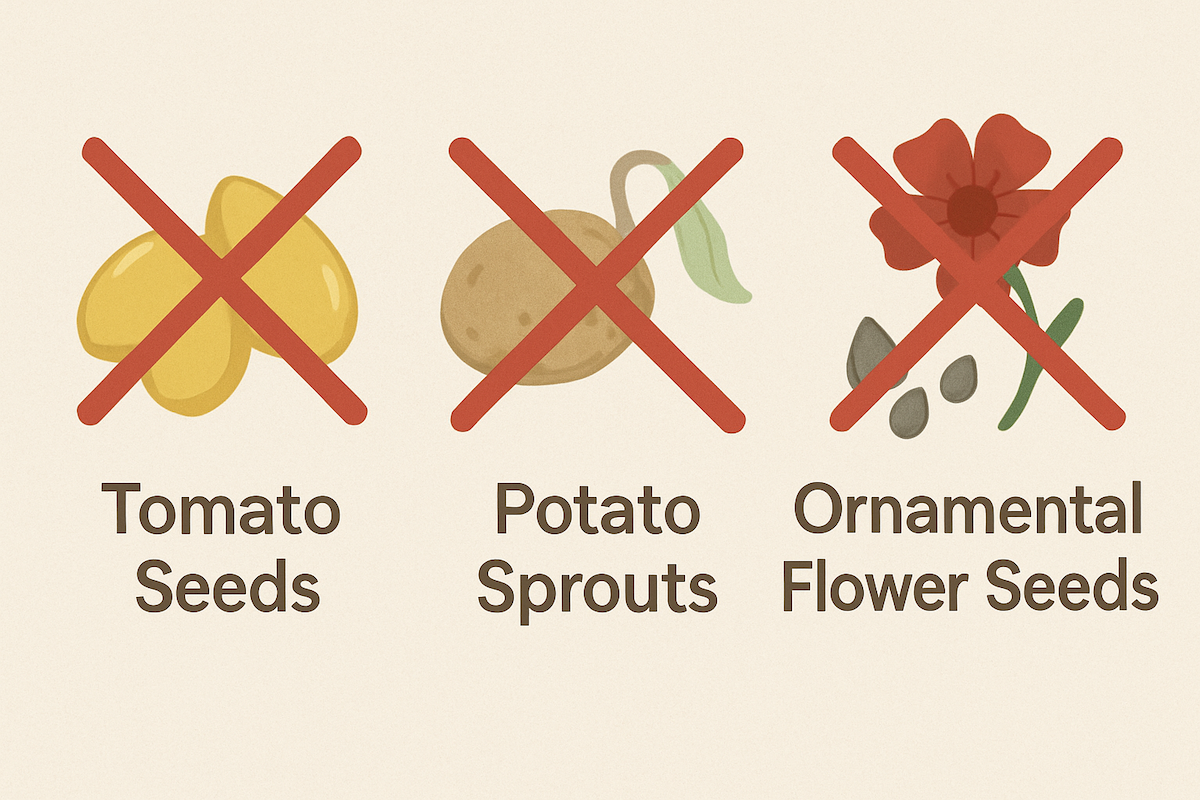Sprouts

Sprouts: Nature's Most Concentrated Nutrition Powerhouse
I used to think sprouts were just a garnish until I discovered their incredible secret: these tiny powerhouses contain up to 100 times more enzymes than raw fruits and vegetables. Sprouts to eat and produce at home aren't just food—they're living nutrition that transforms your health in the most delicious way possible.
What Exactly Are Sprouts? Nature's Miracle Unveiled
Sprouts are essentially seeds that have been awakened from their dormant state. When you soak them for just a couple of days, magic happens. The germination process triggers an explosion of nutritional value that makes these tiny plants some of the most nutrient-dense foods on the planet.
What fascinates me most is how the nutritional profile completely transforms during sprouting. The seed's protective compounds break down while new vitamins, minerals, and enzymes spring to life. It's like watching nature's own laboratory creating superfoods right on your countertop.
The Nutritional Revolution: Why Sprouts Outshine Everything Else

Here's what happens during those crucial first few days of sprouting that will blow your mind:
- Vitamin Content Skyrockets: Some sprouts show a 500% increase in certain vitamins within just 48-72 hours of germination
- Enzyme Activation: Digestive enzymes multiply dramatically, making sprouts easier to digest than the original seeds
- Protein Becomes More Bioavailable: The sprouting process breaks down protein inhibitors, making plant proteins more accessible to your body
- Mineral Absorption Improves: Phytic acid (which blocks mineral absorption) decreases significantly during sprouting
- Antioxidant Levels Surge: Many sprouts develop new antioxidant compounds that didn't exist in the dry seed
The Easiest Entry Point: Bean Sprouts
If you're new to eatable sprouts, start with beans for bean sprouts. They're practically foolproof and give you incredible results fast. Mung beans and lentils are my personal favorites for beginners—they sprout quickly, have a mild flavor, and are incredibly versatile in recipes.
The beauty of beans sprouts is their texture and nutritional punch. They're crunchy, fresh, and packed with plant-based protein that's been pre-digested by the sprouting process itself.
A Flavor Adventure: From Mild to Bold
One of the most surprising things I discovered is how dramatically flavor changes from sprout to mature plant. Radish sprouts taste like peppery goodness without the wait for full-grown radishes. Sunflower sprouts have a nutty, sweet flavor that's completely different from sunflower seeds. Broccoli sprouts contain significantly higher levels of sulforaphane (a powerful antioxidant) than mature broccoli heads.
Safety First: What NOT to Sprout

While most sprouts are incredibly beneficial, there are important exceptions. Never attempt to sprout these for consumption:
- Tomato seeds (contain toxic compounds)
- Potato sprouts (contain solanine, which is poisonous)
- Rhubarb seeds (oxalic acid content makes them dangerous)
- Any seeds from ornamental plants or flowers not specifically sold for sprouting
Always use seeds specifically labeled for sprouting to ensure they haven't been treated with chemicals.
Why Your Kitchen Needs Sprouts Right Now
Adding eatable sprouts to your diet is one of the simplest health upgrades you can make. They require minimal space, grow year-round, and deliver maximum nutrition in minimal time. Whether you're adding beans sprouts to stir-fries, topping sandwiches with radish sprouts, or blending broccoli sprouts into smoothies, you're getting living nutrition at its absolute peak.
The best part? You can grow them right on your countertop in just 3-5 days. It doesn't get fresher—or more powerful—than that.
Image Descriptions for Implementation:
-
Top of Article Image (Essential):
- File Name:
sprouts-variety.jpg - Description: A beautiful flat lay arrangement of 4-5 different types of fresh sprouts in small bowls. Include classic mung bean sprouts, vibrant red clover sprouts, dark green broccoli sprouts, and golden sunflower sprouts. The image should look fresh, colorful, and appetizing.
- File Name:
-
In-Article Image 1 (Nutrition Comparison):
- File Name:
sprout-nutrition-graph.jpg - Description: A simple, clean infographic showing the nutritional increase from dry seed to sprout. Use upward arrows next to icons representing vitamins, enzymes, and antioxidants with percentage increases (e.g., "Vitamin C +500%", "Enzymes +100x").
- File Name:
-
In-Article Image 2 (Bean Sprouts Focus):
- File Name:
bean-sprouts-closeup.jpg - Description: A macro shot of fresh, crisp mung bean sprouts filling the frame. The image should show their juicy texture and tiny yellow leaves developing, making them look irresistible and crunchy.
- File Name:
-
In-Article Image 3 (Warning Visual):
- File Name:
do-not-sprout.jpg - Description: A clear, educational image with a red "X" over examples of seeds that should NOT be sprouted for consumption: tomato seeds, potato sprouts, and ornamental flower seeds. Use simple illustrations or photos with clear warning symbols.
- File Name:



